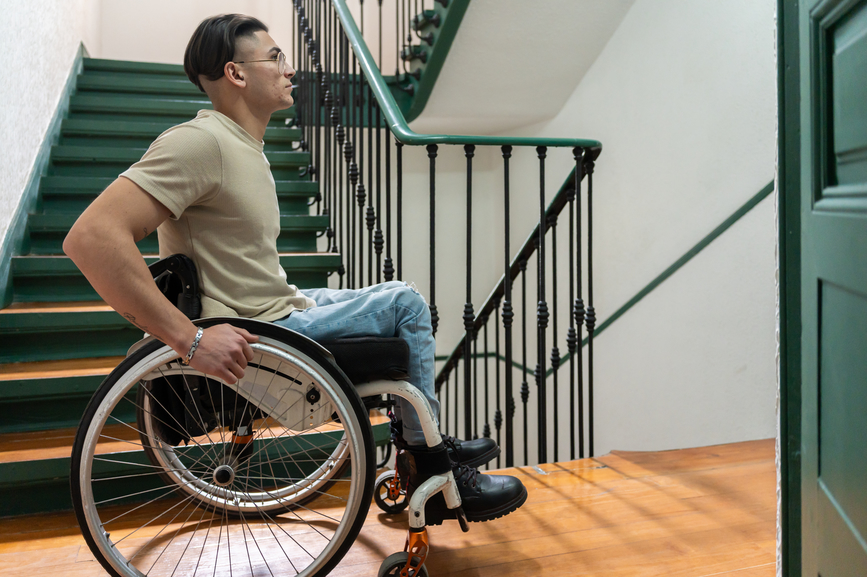March 10, 2022 / Disability Justice
Grants must be good for ALL
Laura Poppiti
Laura Poppiti (she/her) is CCI’s Program Director where she manages all grantmaking programs for California-based artists and arts workers, in addition to overseeing special initiatives. Prior to CCI, she worked for more than a decade at small and mid-size arts and arts education nonprofit organizations—including New Conservatory Theatre Center, The Imagine Bus Project, SF Camerawork, and the Museum of Performance & Design—in various fundraising and programmatic roles.
As long-time funders of individuals in the arts, we have learned how a seemingly innocuous grant may actually harm grantees who are receiving disability-related and other social service supports, such as Supplemental Social Income or Social Security Disability Insurance.
Our Spinal Cord Injury Artist-Innovator Fund (SCI Artist-Entrepreneur Fund) is a competitive, open-application, national program that awards project grants to individual artist-entrepreneurs with spinal cord injuries who are inspired to innovate by opportunity-based entrepreneurship – in other words, by the possibilities and benefits that are offered through the experience of a creative practice and living with spinal cord injury.
The Fund offers ten awards of $8,500 each, but, because the income and asset limits are so austere for individuals with disabilities, receiving a grant payment of any denomination could put the recipients’ benefits or services that they’re receiving at risk of being temporarily interrupted or permanently discontinued. In our experience, we’ve worked with some grantees who could not receive more than $85 a month in income.

Our “solutions” in these instances are not really solutions. They are workarounds to make up for larger structural issues that exclude—and penalize—individuals with disabilities from accessing a living wage. So as not to jeopardize grantees’ benefits, we’ve worked with legal counsel to identify the following payment options:
- In some cases, we enter into the grant agreement with an intermediary such as the grantee’s fiscal sponsor, their own 501c3 nonprofit, or their business.
- In other cases, we work with the grantee to build a custom payment plan. Sometimes this means disbursing the $8,500 grant in as few as 3 payments while other plans have been as many as 13 payments.
- For those living within the most austere income limits, we have offered direct purchases, in which case the grantee can have their vendor(s) directly invoice CCI for goods and services, up to the grant amount. Since CCI pays vendors directly, the grant funds never go through grantees or their bank accounts directly. There are other restrictions: project-related items and services that CCI purchases cannot be food, shelter, or liquid assets—all of which count towards income limits that affect their abilities to qualify for federal or state benefits.
- Another option for grantees with austere income limits is to deposit the grant award into an Achieving A Better Life Experience (or ABLE) account, which are savings accounts for certain individuals with disabilities that can be funded by third parties, like CCI. Up to $16,000 can be contributed into the person’s ABLE account in a single tax year and in most circumstances, funds in an ABLE account don’t count toward income or asset limits for most government programs.
These options pose challenges–they are labyrinthian options to weigh, with significant long-term consequences for grantees. Often, they require funders to invest in additional services beyond the grant amount to navigate the challenges, including legal counsel, accounting expertise, and tax preparation. They also exact an energy toll of stress and worry on the grantees who should be celebrating being recognized and rewarded for their work. All of these considerations often scare off private funders who want to avoid doing any harm, thus exerting a cooling effect on philanthropic support for many diverse types of people with disabilities.
Income ceilings and asset limits for disability beneficiaries not only pose challenges for funders and grantees, they are simply unjust. Payment plans and direct purchases can only get us so far. Artists on disability deserve the dignity of recognition for their valuable contributions and the right to earn income; not penalty for pursuing work. How is it that a country that prides itself on entrepreneurship and enterprise exclude so many people with unique perspectives and solutions from earning income? Experiences with our SCI Artist-Entrepreneur Fund helped illuminate the degree to which our social systems not only devalue people’s labor–their creativity, innovation, and entrepreneurship–but outright discourage certain people from rising out of poverty. They demonstrate why we need protections and foundations of support that benefit everyone, regardless of how they work, and support greater human flourishing. That’s why we strongly support efforts in Congress to increase asset and income caps for those on disability, and hope that this bipartisan proposal will attract new and more diverse champions this year. Learn more from the Disability Economic Justice Collaborative.


